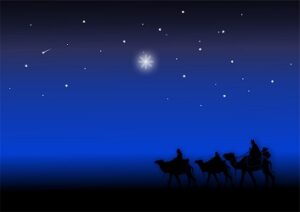
O-o-o-o-h man! Are there ever going to be some deep theological highways and byways in this post. So hang on and let’s get started with this wonderful choral piece which was tragically truncated by Mendelssohn’s early death in 1847 at the age of 38. He had apparently planned to write an entire oratorio, Christus, following the same trajectory as Handel’s Messiah, but left only a few finished sections and a number of fragments. A set of three excerpts dealing with the birth of Christ is well suited for use at Christmas, and consists of a soprano recitative, a male trio, and a chorus.

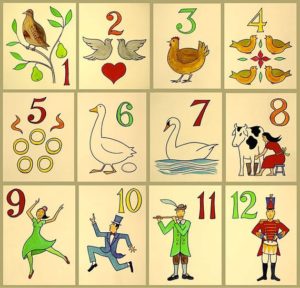 I remember back in elementary school being teased a bit by some Jewish classmates about the superiority of Hanukkah over Christmas: “You only have one day to get presents, but we have eight.” I’m sure I wasn’t quick-witted enough to mention the plethora of gift-giving in “The Twelve Days of Christmas” with its extra days of celebration. So here’s the information I didn’t have back then.
I remember back in elementary school being teased a bit by some Jewish classmates about the superiority of Hanukkah over Christmas: “You only have one day to get presents, but we have eight.” I’m sure I wasn’t quick-witted enough to mention the plethora of gift-giving in “The Twelve Days of Christmas” with its extra days of celebration. So here’s the information I didn’t have back then.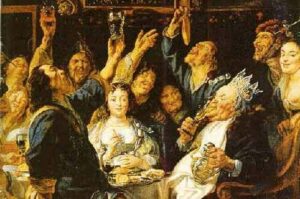
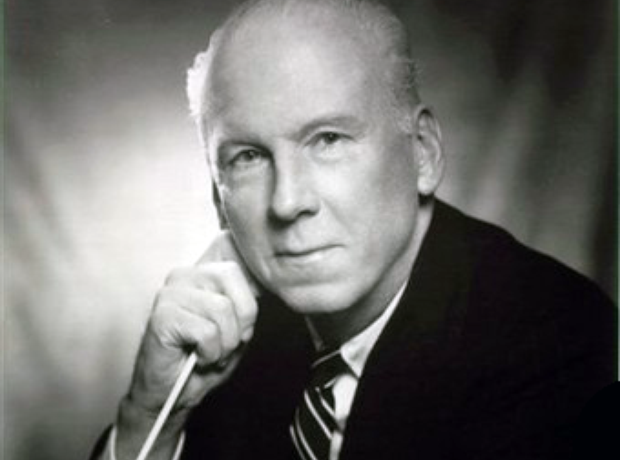 Hey! Who says Leroy Anderson is “lightweight,” anyway? That is, “containing little serious matter”? Just because his music is accessible and fun, with clever sound effects, does that mean it’s not worth our time? Okay, enough with the questions, Let’s get to some answers.
Hey! Who says Leroy Anderson is “lightweight,” anyway? That is, “containing little serious matter”? Just because his music is accessible and fun, with clever sound effects, does that mean it’s not worth our time? Okay, enough with the questions, Let’s get to some answers. For all you grammar geeks out there, the answer is “both,” depending on the line in the song. It’s quite clever wording. In the first line “jingle” is an adjective, then, in the second line the bells are told to jingle, so the word is now an imperative verb. Isn’t that cool?
For all you grammar geeks out there, the answer is “both,” depending on the line in the song. It’s quite clever wording. In the first line “jingle” is an adjective, then, in the second line the bells are told to jingle, so the word is now an imperative verb. Isn’t that cool?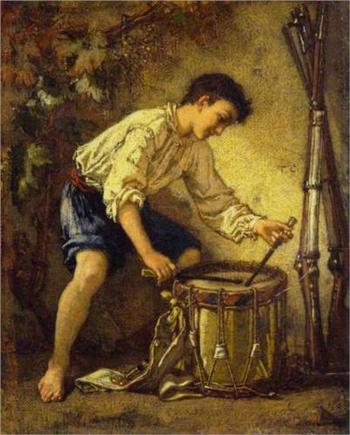 Let’s get the two guys out of the way first. Here’s what I found: the names are common in old French carols, where they are rendered as “Guillô” and, well, “Robin.” The French version of “Willie” is pronounced “Gwee-yo.” Robin’s name is “Ro-bɛ̃,” with that funny-looking “e” being fairly nasal and the “n” not really being pronounced at all—it’s just a marker for the nasal sound. Everybody got that? Anyway, I’m sure if I dug around long enough I could discover why these two names are sort of generic, but I’ll leave it at that, because there’s more ground to cover here. You can just figure that Willie and Robin are like Jack and Jill, or Jim and John, or Lucy and Ethel. (But see the note at the very end of this post about the alternate names that Karl Jenkins used in his arrangement of this carol.)
Let’s get the two guys out of the way first. Here’s what I found: the names are common in old French carols, where they are rendered as “Guillô” and, well, “Robin.” The French version of “Willie” is pronounced “Gwee-yo.” Robin’s name is “Ro-bɛ̃,” with that funny-looking “e” being fairly nasal and the “n” not really being pronounced at all—it’s just a marker for the nasal sound. Everybody got that? Anyway, I’m sure if I dug around long enough I could discover why these two names are sort of generic, but I’ll leave it at that, because there’s more ground to cover here. You can just figure that Willie and Robin are like Jack and Jill, or Jim and John, or Lucy and Ethel. (But see the note at the very end of this post about the alternate names that Karl Jenkins used in his arrangement of this carol.)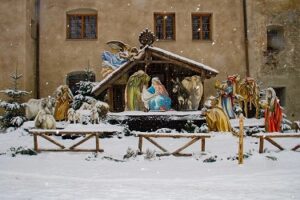 When you see the title of the English Christmas carol “See Amid the Winter’s Snow,” you have to ask yourself the question in the title of this post.
When you see the title of the English Christmas carol “See Amid the Winter’s Snow,” you have to ask yourself the question in the title of this post.
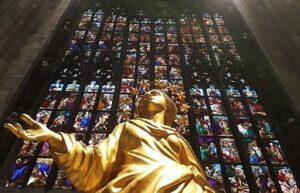 You just never know what you’re going to find out when you google something! I assumed (a common action for me) that Franz Biebl was someone who lived several hundred years ago, as the music has a very old-ish feel to me. Perhaps he lived in the 1600’s or 1700’s? And it certainly would never have occurred to me that:
You just never know what you’re going to find out when you google something! I assumed (a common action for me) that Franz Biebl was someone who lived several hundred years ago, as the music has a very old-ish feel to me. Perhaps he lived in the 1600’s or 1700’s? And it certainly would never have occurred to me that: I’ve done my usual going-far-afield process in trying to decipher this carol, and found that, as usual, Liberties Have Been Taken with the original text, this one from Catalonia. (That’s a region of Spain that speaks a dialect called Catalan; you may be aware that there’s a separatist movement there that seeks to have independence from Spain. The tune, by the way, is apparently Catalonian also, as I’ve seen no composer’s name anywhere.) To start off this post, then, here’s the original text and a quite literal translation:
I’ve done my usual going-far-afield process in trying to decipher this carol, and found that, as usual, Liberties Have Been Taken with the original text, this one from Catalonia. (That’s a region of Spain that speaks a dialect called Catalan; you may be aware that there’s a separatist movement there that seeks to have independence from Spain. The tune, by the way, is apparently Catalonian also, as I’ve seen no composer’s name anywhere.) To start off this post, then, here’s the original text and a quite literal translation: